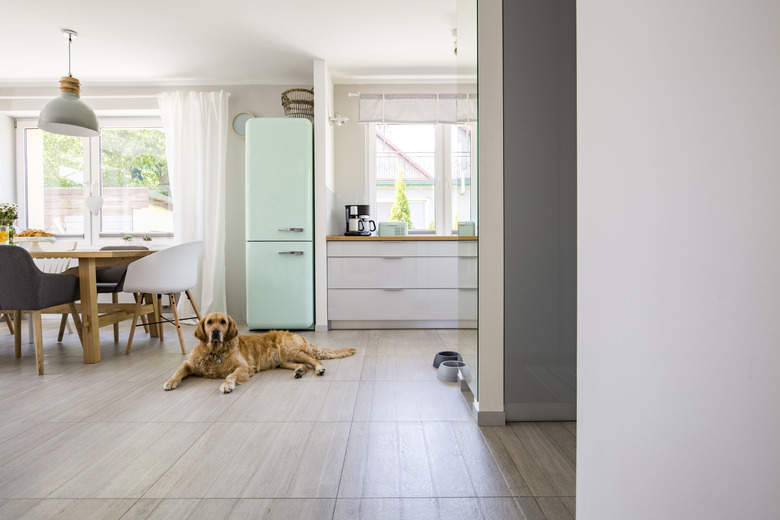How To Repair A Vintage Refrigerator
A vintage refrigerator can be a great addition to add some style to a modern kitchen or provide a focus piece for a home bar. Many companies actually sell retro-style refrigerators that still provide all of the modern amenities customers have come to expect. However, for folks who like do-it-yourself type projects, it can sometimes be far more satisfying to work on antique refrigerator repair. There are many restoration projects a handy individual can do to spruce up an old vintage refrigerator.
Important Safety Considerations
The first things to consider when renovating a vintage refrigerator are the tasks that you can accomplish with your skills set, and which tasks may need to be farmed out. For example, the wiring in many old refrigerators does stand the test of time, but never tamper with electrical wiring and connections unless you are qualified. Electrical work always runs the risk of shock, fire or electrocution.
Likewise, mechanical work on the compressor or the coolant should be done by a professional. Older refrigerators may still use gas as a coolant rather than one of today's safer chemicals, which adds potential risk if coolant were to leak. It's worth the money to have a vintage appliance checked out by a technician to ensure that it's safe to bring into your home.
In addition, know that in general, vintage appliances may not be safe to use. Universal Appliance Repair notes that these units have sometimes undergone decades of wear and tear. Any repair tech or parts supplier you work with must be an expert to ensure the safe operation of the appliance.
Starting a Vintage Refrigerator Restoration
To start, take a look at the interior parts of the refrigerator and see what needs a bit of work. Some areas to pay attention to include rust, hinges, gaskets, cracks and other damage.
Rusted racks can be removed from the refrigerator and cleaned using rust remover. Move to a well-ventilated location and wear a mask if the product requires. Spray on the rust remover and then scrub with steel wool to reveal the metal below.
These racks can then be spray painted with a rustproof primer and color if desired. Be sure the paint is compatible with the temperatures it will see inside the refrigerator.
Look for Damage
Examine any drawers, shelves or internal doors. Check whether any hinges or screws need to be tightened. Clean out any residue with warm water and dish soap. Make sure shelves sit stably inside the refrigerator.
Inspect the rubber gasket around the refrigerator door. These rubber gaskets do not age well, and any cracks or damage will affect the seal of the refrigerator. If the gasket needs to be replaced, you'll have to find a supplier who provides vintage refrigerator parts for your particular unit.
Carefully check the interior walls for any cracks, dents or damage. Sometimes, these can be filled with putty and painted over. Significant damage could affect the refrigerator's mechanical parts and should be reviewed by a technician.
Spruce Up the Exterior
After working on the inside, it's time to spruce up the outside surface of the refrigerator. Most old appliances will look brand-new with some work and fresh paint on the exterior. This can be a bit time-consuming but will be worth it.
First, wipe down the refrigerator with warm water and soap or a cleaning solution. If there's any rust on the exterior, spray with rust remover and scrub with steel wool until the rust is gone. Then, sand down the exterior using a fine sandpaper until the surface is smooth. Scratches can usually be sanded out; dents or chips may need to be filled in with some type of putty or other material.
Rinse off the surface with clean water, then protect the areas that don't need to be painted with masking tape and newspaper. Antique Appliances recommends using a rust-inhibiting metal-compatible primer as a base, followed by spray paint intended for metal.
